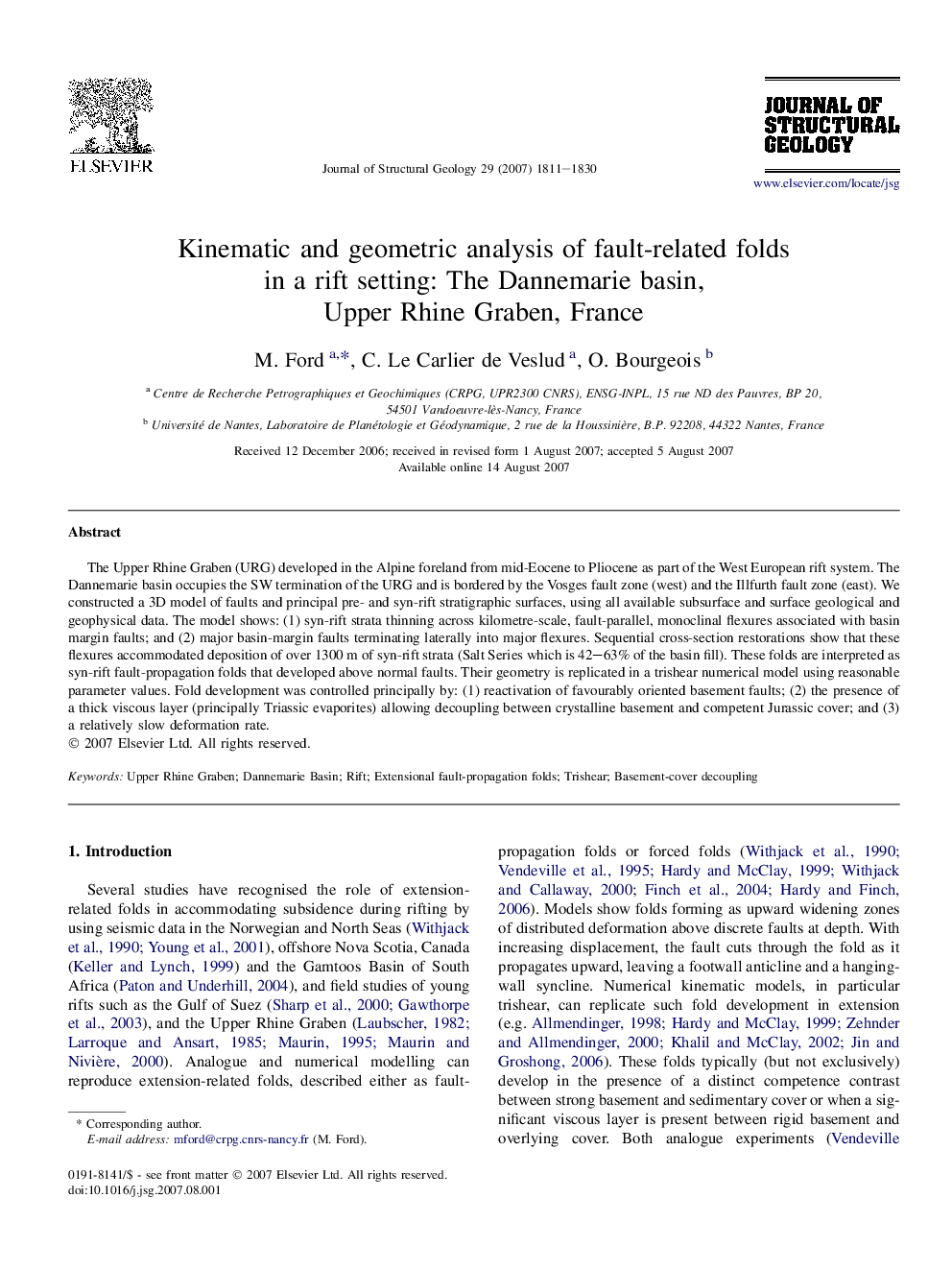| Article ID | Journal | Published Year | Pages | File Type |
|---|---|---|---|---|
| 4734381 | Journal of Structural Geology | 2007 | 20 Pages |
The Upper Rhine Graben (URG) developed in the Alpine foreland from mid-Eocene to Pliocene as part of the West European rift system. The Dannemarie basin occupies the SW termination of the URG and is bordered by the Vosges fault zone (west) and the Illfurth fault zone (east). We constructed a 3D model of faults and principal pre- and syn-rift stratigraphic surfaces, using all available subsurface and surface geological and geophysical data. The model shows: (1) syn-rift strata thinning across kilometre-scale, fault-parallel, monoclinal flexures associated with basin margin faults; and (2) major basin-margin faults terminating laterally into major flexures. Sequential cross-section restorations show that these flexures accommodated deposition of over 1300 m of syn-rift strata (Salt Series which is 42–63% of the basin fill). These folds are interpreted as syn-rift fault-propagation folds that developed above normal faults. Their geometry is replicated in a trishear numerical model using reasonable parameter values. Fold development was controlled principally by: (1) reactivation of favourably oriented basement faults; (2) the presence of a thick viscous layer (principally Triassic evaporites) allowing decoupling between crystalline basement and competent Jurassic cover; and (3) a relatively slow deformation rate.
